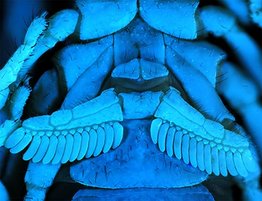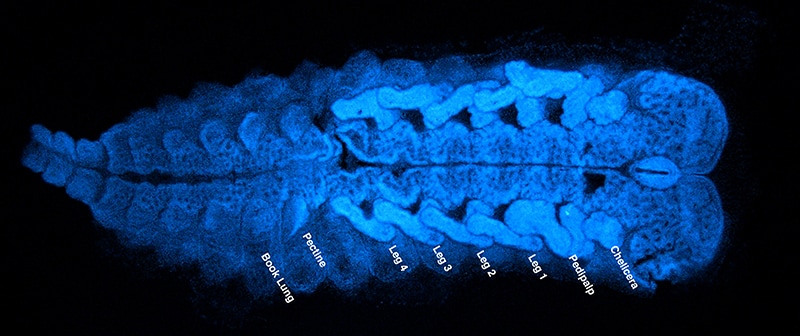
From all the diversity of arthropod appendages, scorpion pectines are unique. These appendages are located on the third segment of the opisthosoma, and they are used as chemosensory and mechanosensory receptors. Despite its embryonic development is known for several species, the genetic development is unknown. The study of the genetic architecture of these appendages will help to understand the position and genetic homologies of pectines to other arachnid appendages.

Prof. Prashant Sharma is studying the genetic mechanisms responsible for the development of appendages in basal arthropods. Using techniques such as in situ hybridization, appendage transcriptomes, and gene knockdown, I am collaborating in this project studying the genetic development of scorpion pectines of the species Centruroides sculpturatus Ewing, 1928.


